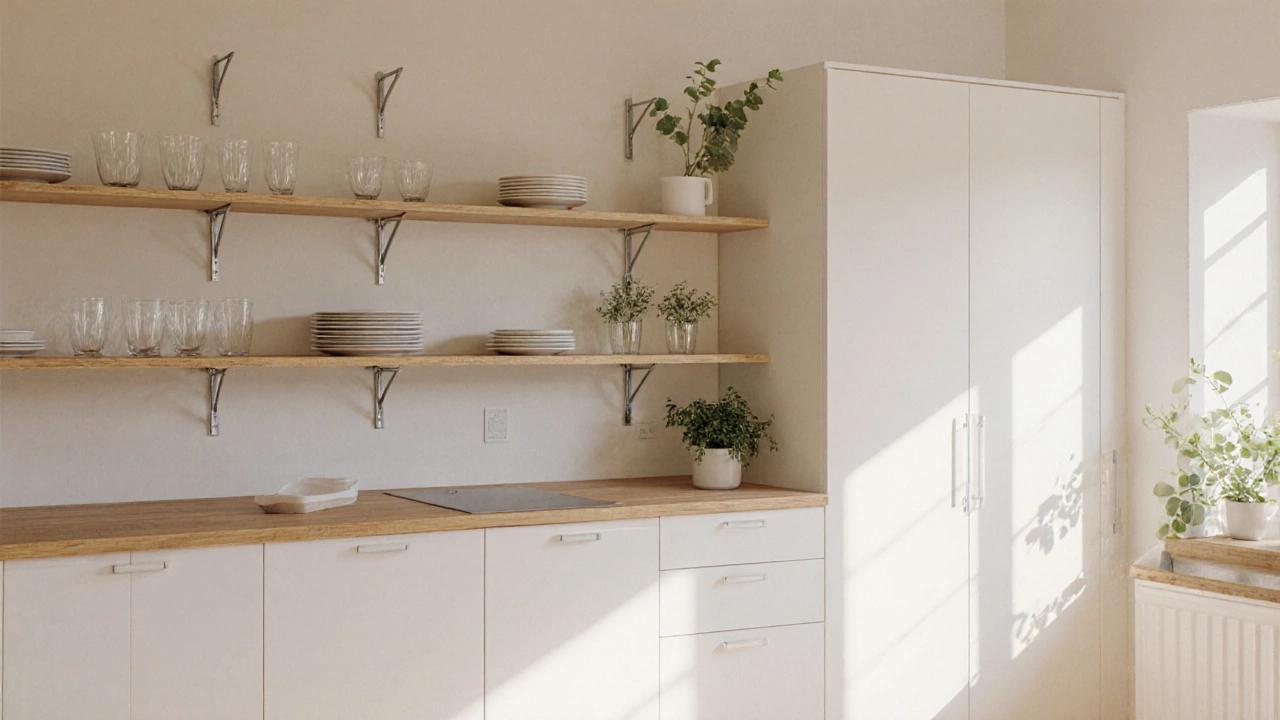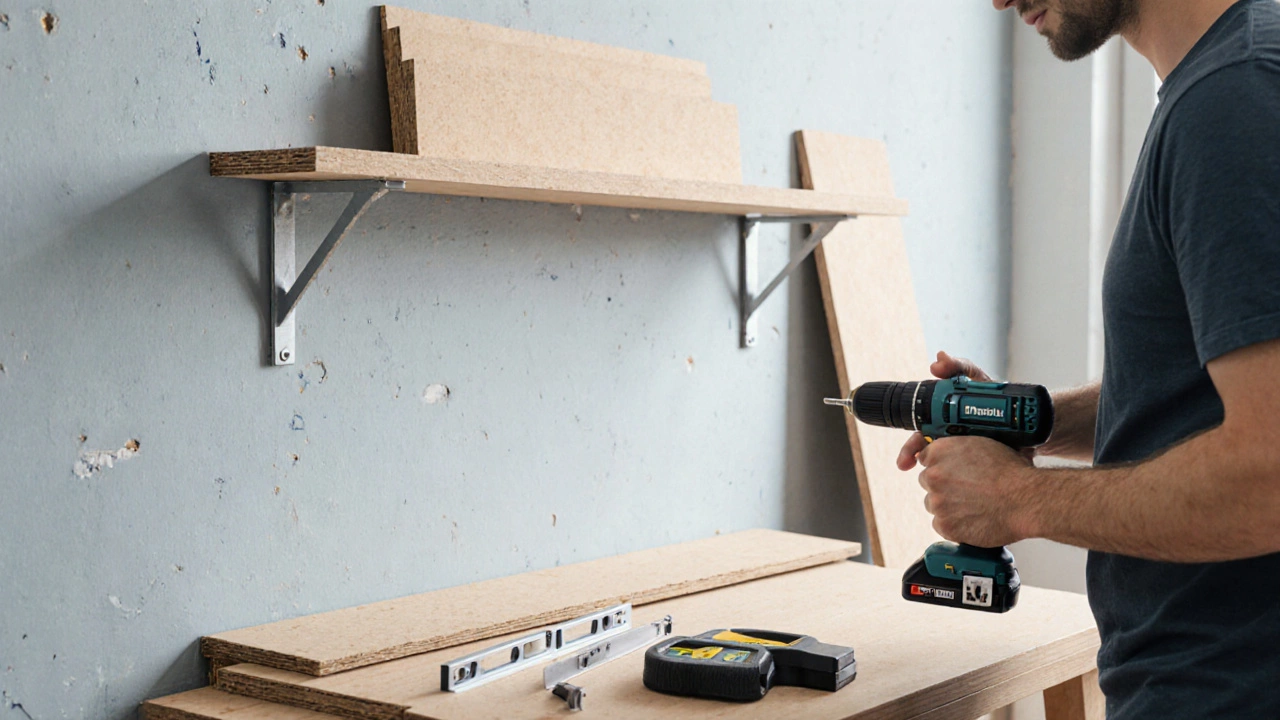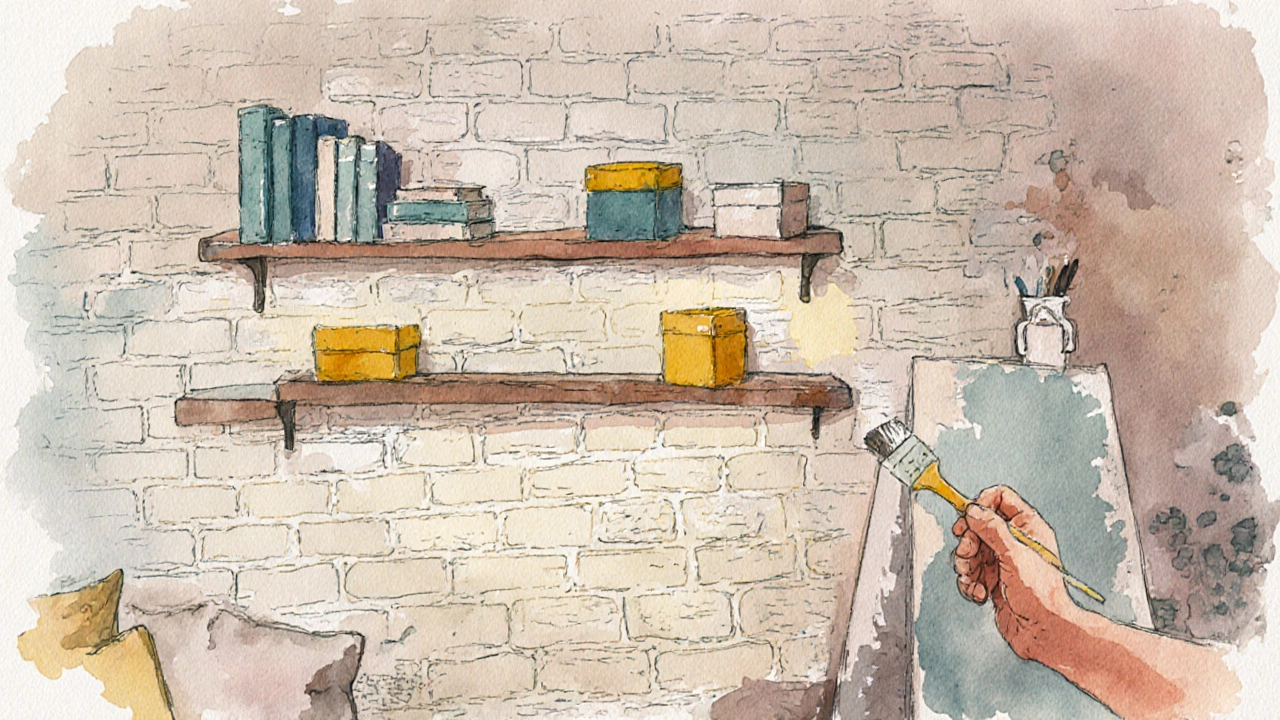Can Open Shelving Save You Money?

UK Open Shelving Cost Calculator
Open Shelving
£0
Materials + Installation
Traditional Cabinets
£0
Materials + Installation
- Wall Reinforcement £30-£60
- Lighting £20-£50
- Cleaning Frequency Time Cost
- Item Damage Risk Insurance/Replacement
Ever wondered if those minimal‑look open shelving a style of wall‑mounted storage that shows off what’s on the shelves instead of hiding it behind doors actually cuts your household expenses. The short answer is yes - but only when you understand where the savings come from and where hidden costs can bite.
Key Takeaways
- Open shelving typically costs 30‑50% less in materials than traditional cabinets.
- DIY installation can shave another 20‑40% off the total price.
- Choosing lightweight materials (like plywood or MDF) reduces both purchase and mounting expenses.
- Be aware of extra costs: wall reinforcement, lighting, and higher cleaning frequency.
- Use the design tips below to stretch every pound further.
Where the Money Is Saved
Three main categories drive the price difference between open shelving and closed storage solutions.
- Material costs: Cabinets need solid doors, hinges, drawer slides, and sometimes decorative veneers. Open shelves are simply a board or two, brackets, and fasteners.
- Installation labor: A carpenter spends time aligning doors, setting hinges, and ensuring flawless finish work. Mounting a shelf often takes a single afternoon with a drill.
- Long‑term flexibility: Because the items are visible, you’re less likely to over‑buy decorative accessories you can’t see, helping you stay within a budget the amount of money you set aside for a project for the whole room.
When you add up average UK prices (2025), a three‑piece wall cabinet set in a modest kitchen runs around £850, while a comparable open‑shelf unit made from the same wood costs roughly £420.
Real‑World Cost Comparison
| Item | Open Shelving | Traditional Cabinets |
|---|---|---|
| Material (wood, MDF, metal brackets) | £45 | £95 |
| Hardware (screws, brackets, hinges) | £12 | £25 |
| Finishing (paint/varnish) | £8 | £15 |
| Installation (DIY) | £0‑£30 | £0‑£30 |
| Professional labor (optional) | £50‑£80 | £120‑£180 |
| Total Approximate Cost | £115‑£185 | £300‑£425 |
The numbers show a clear saving window of roughly £150‑£240 per metre, even if you hire a professional for the installation.

Hidden Expenses to Watch
Open shelving isn’t a free‑ride. Some costs can erode the advantage if you’re not careful.
- Wall reinforcement adding studs or anchors to support weight: Heavy ceramics or books may need extra studs, adding £30‑£60 per shelf.
- Lighting task or accent lighting to highlight displayed items: LED strips or spotlights can start at £20 each.
- Cleaning more frequent dusting of exposed surfaces: Time cost, not money, but can lead to buying additional cleaning tools.
- Potential damage breakage of items because they’re not protected by doors: Factor in insurance or replacement costs for fragile decor.
Design Strategies to Maximise Savings
Here are practical tips that let you stretch the budget without sacrificing style.
- Choose lightweight, affordable boards: Plywood or MDF with a simple veneer looks great and costs less than solid hardwood.
- Standardise bracket sizes: Buying a single bracket type in bulk reduces per‑unit price by up to 25%.
- Plan shelf depth wisely: A 12‑inch depth is often enough for plates or books; deeper shelves waste material and space.
- Group similar items: Stacking like‑with‑like makes the visual layout cleaner and reduces the need for extra shelving.
- DIY finishing: A fresh coat of chalk paint applied yourself costs under £10 and adds a trendy vibe.
DIY vs. Professional Installation
Deciding who does the work can swing the overall cost dramatically.
- DIY: If you have a drill, a level, and basic carpentry confidence, you’ll likely spend under £30 on fasteners and maybe a rental ladder. You also gain the satisfaction of a project well done.
- Professional: Hire a handyman for around £45‑£60 per hour. For a simple straight‑line run, the job often finishes in 2‑3 hours, leading to a total of £120‑£180.
For most homeowners, the DIY route wins unless the wall is plasterboard without studs, in which case a professional can ensure safe load‑bearing.

When Open Shelving Might Not Save Money
There are scenarios where the budget advantage shrinks or even reverses.
- If you need to store high‑value items that require protection, the cost of buying locked cabinets may outweigh the visual appeal of open shelves.
- In rental properties where you can’t drill into walls, you may have to use adhesive brackets that are less sturdy and may need replacement each year.
- For rooms with high humidity (e.g., bathrooms) open shelving made of untreated wood can warp, leading to replacement costs.
In those cases, treat open shelving as a design statement rather than a cost‑cutting measure.
Bottom Line
open shelving can indeed save you a good chunk of money, especially when you keep material choices simple, install it yourself, and avoid hidden expenses. The key is to match the style to the room’s function and to plan the layout carefully.
Frequently Asked Questions
How much does a metre of open shelving cost in the UK?
For a basic MDF board with metal brackets, material costs run between £65‑£95 per metre. Adding DIY installation brings the total to roughly £115‑£185, while hiring a professional can push it to £200‑£250.
Can I install open shelves on plasterboard walls?
Yes, but you’ll need heavy‑duty wall anchors or toggle bolts rated for the load. Expect to spend an extra £10‑£20 on the anchors, and consider adding a wooden cleat for extra strength.
Are there fire‑safety concerns with open shelving in kitchens?
Open shelves can expose flammable items to heat sources. Keep cookware away from the stove, use heat‑resistant materials (like steel brackets), and avoid storing oils or paper products directly above cooking surfaces.
What’s the best material for budget‑friendly open shelves?
Plywood or medium‑density fibreboard (MDF) with a veneer finish offers a good balance of strength, weight, and cost. They’re widely available in UK home‑improvement stores for £15‑£30 per sheet.
Do open shelves increase the resale value of a home?
When done tastefully, they can boost perceived modernity and make rooms feel larger, which buyers often appreciate. However, the impact is modest-generally a 1‑2% increase in overall property value.
How many items can a typical 30‑inch shelf hold?
A well‑supported 30‑inch shelf made of 18‑mm plywood can safely hold around 30‑40kg, which translates to roughly 15‑20 books, a few plates, or decorative boxes.